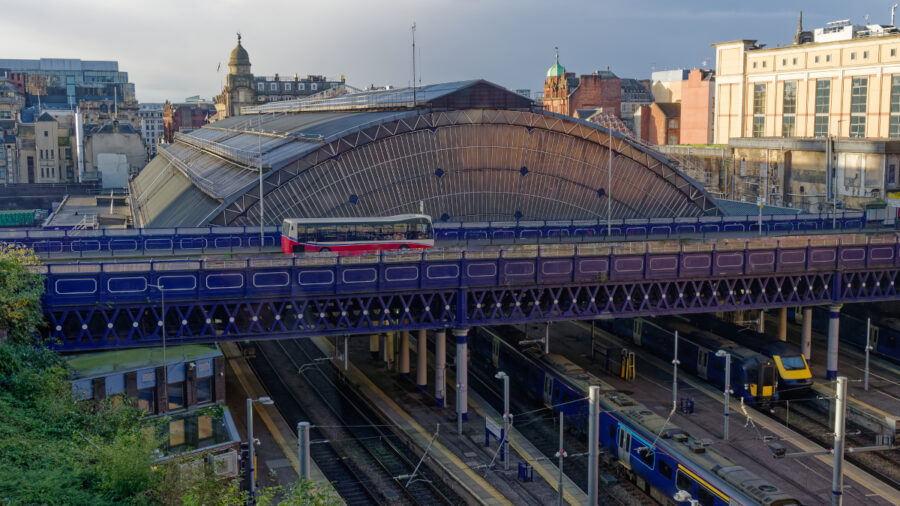
It’s been almost 100 years since Scotland’s first passenger steam locomotive, the Earl of Airlie, chugged off on the Dundee and Newtyle Railway. The closure of the passenger line in 1955 foreshadowed the swingeing rail cuts overseen by Dr Richard Beeching in the 1960s, which left the Scottish rail network a shadow of its former self.
Many of the buildings that remain in use following the infamous ‘Beeching axe’ are grand old designs or depots raised long ago in the glory years of nationalised rail. Their energy requirements are as large and complex as the structures themselves – and their energy operations are often highly inefficient.
With Scotland’s nationalised rail operator Scotrail seeking to reach net zero by 2045, it has set out to retrofit these aged designs.
Digitising Victorian-era designs
Reducing the network’s carbon footprint is no small task. For the newest buildings in the network, floor plans and other particulars were detailed but not digitised. But, for the older Victorian-era structures, such details simply did not exist, says Poul Wend Hansen, the head of sustainability for Scotrail. Meanwhile, any information about energy consumption was gleaned from one-off site visits – not the sort of granular real-time data that’s necessary for proper planning.
To help understand where improvements could be made, Scotrail recruited a spinout business from Cardiff University called Optimise AI, which uses generative AI to build detailed digital twins from only limited data. With this tech, Scotrail and Optimise mapped out the intricate designs of each of the 25 buildings in the network, among them major sites in Aberdeen, Inverness and Glasgow.
The process starts with digital scans of the stations and depots. Armed with hand-held 3D scanners, teams snap the interiors before uploading the images to the Optimise AI platform, which then sketches out a digital model.
With the first draft of the interior completed, teams at the startup add in all the particulars, such as types of materials, until they’ve created a full model, complete with all the ins and outs of the building. Meanwhile, IoT devices and additional meters are installed in the physical site to provide real-time data on energy use and other factors. This enables an easy comparison of energy performance against net-zero standards using real-time data, bringing together both current energy use and any potential for future efficiencies.
Small tweaks, big results
According to Hansen, the approach has proved useful in winning buy-in from the organisation for remodelling the buildings. Rather than creating a laborious but slightly speculative business case, he can simply show stakeholders a digital model of the structures and point to areas where costs could be saved with simple tweaks to energy use.
“We’re a government body,” says Hansen. “It’s a different operating model to a business – we have fixed budgets so we need to justify that we’re as efficient as possible.”
Most carbon emissions on the network come from the use of fossil fuels in outmoded engines. As rolling stock is modernised and old rail lines electrified, projects such as the Optimise AI initiative could shave 1% off the organisation’s total carbon footprint. And, like the redeveloped concourse that integrates Glasgow Queen Street’s original glass train shed, pursuing energy efficiency could make the network’s past fit for its future, too.

It’s been almost 100 years since Scotland's first passenger steam locomotive, the Earl of Airlie, chugged off on the Dundee and Newtyle Railway. The closure of the passenger line in 1955 foreshadowed the swingeing rail cuts overseen by Dr Richard Beeching in the 1960s, which left the Scottish rail network a shadow of its former self.
Many of the buildings that remain in use following the infamous ‘Beeching axe’ are grand old designs or depots raised long ago in the glory years of nationalised rail. Their energy requirements are as large and complex as the structures themselves – and their energy operations are often highly inefficient.
With Scotland’s nationalised rail operator Scotrail seeking to reach net zero by 2045, it has set out to retrofit these aged designs.





